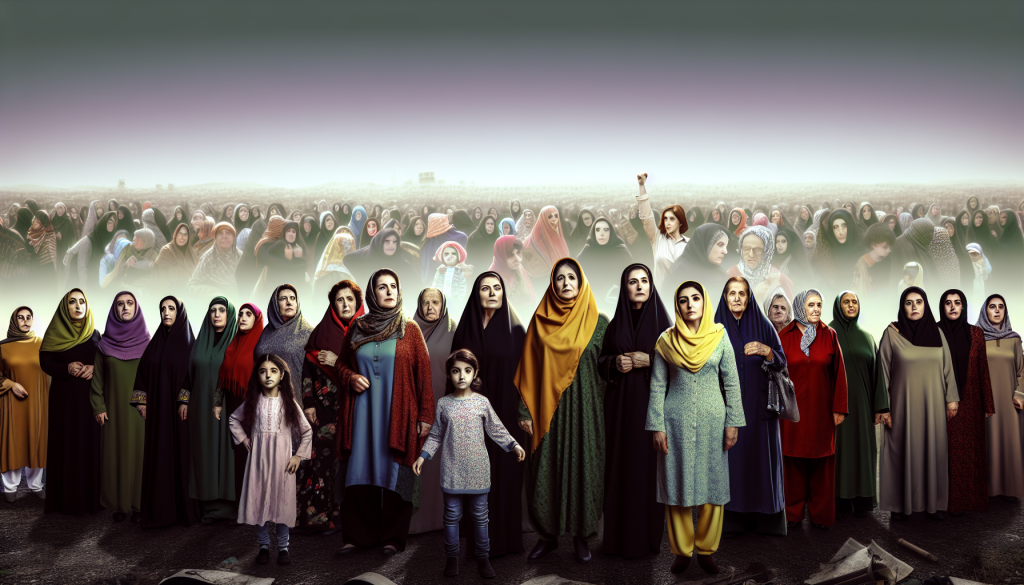The Hidden Dimension of Conflict: Women’s Role in Iran’s Resilience
The recent 12-day conflict between Iran and Israel may have appeared at first glance to be a straightforward military engagement, but it revealed deeper societal dynamics, particularly a significant feminine dimension. Observing remarks from key political figures like Netanyahu and Trump indicates that the conflict’s real objectives extended beyond mere missile exchanges to target Iran’s social fabric and its streets.
Strategic Stages of the Conflict
This complex confrontation unfolded through a systematic plan that can be analyzed in five distinct stages:
Stage One: Decapitation Strategy
The first phase aimed at dismantling Iran’s military command through the surprise assassination of key figures, from senior officers to pivotal operational commanders. This strategy sought to create disarray among Iranian armed forces, aiming to disrupt their ability to mount an effective defense.
Stage Two: Electronic Warfare
Next, a significant focus was placed on electronic warfare and drone strikes aimed at neutralizing Iran’s air defense systems. The goal was clear: incapacitate missile launch sites, leaving the armed forces vulnerable to attacks.
Stage Three: Psychological Warfare
The third stage introduced psychological intimidation via telephone threats directed at military commanders, their families, and influential figures. This tactic played on the personal fears of individuals, aiming to neutralize their resolve from within, thereby immobilizing their capacity to act.
Stage Four: Financial Disruption
Simultaneously, cyberattacks targeted financial institutions like Bank Sepah, disrupting monetary flows and instilling a sense of helplessness among military personnel and their families. This moved to reinforce the earlier psychological tactics, compounding individuals’ passivity amid the conflict.
Stage Five: Media Campaign
A major media campaign rounded out the enemy’s strategy. Israel mobilized foreign media and social networks to amplify slogans designed to incite unrest in Iran. Figures such as Reza and Yasmin Pahlavi urged urban protests, while Netanyahu called upon Iranians to make their voices heard against their regime, underscoring a belief in the potential for regime change.
Unexpected Outcomes on the Ground
Despite the intricately crafted plan, the anticipated chaos failed to materialize. The Iranian armed forces rallied effectively, reorganizing and recovering quickly under the leadership of their Commander-in-Chief. Against a backdrop of impending doom, Iranian missiles were nonetheless launched toward Tel Aviv, defying enemy expectations.
Most strikingly, the anticipated civil unrest did not erupt. Instead of rising chaos, Iranian society demonstrated solidarity and unity. Reports indicated a surge of public engagement, as citizens actively reported aerial threats, reinforcing a collective national identity agitated by foreign pressures.
Women: The Emotional Pillars of Society
To fully comprehend Iran’s response, emphasis must be placed on the role of women, who act as the emotional anchors within families. Their influence extended beyond domestic responsibilities to foster national resilience. Surveys showed a surprising 77% of Iranians expressed pride in their military’s actions against Israel, with widespread national cohesion even amidst external conflict.
The role of women in nurturing emotional stability within households has been pivotal. Research suggests that during times of crisis, including the COVID-19 pandemic, women historically shoulder the emotional load, facilitating family cohesion and mitigating anxiety. A study highlighted how their efforts enhance the quality of life and mental health within households, ultimately leading to a collective resilience that uplifts society as a whole.
The Broader Implications of Family Resilience
The ongoing crisis demonstrated that the strength of Iranian society was not just anchored in military might but also deeply rooted in familial dynamics. Women’s efforts to maintain calm and cohesion during the conflict underscored their essential role as the backbone of social unity.
This dynamic illustrates a broader principle: while external forces may look toward igniting turmoil, the internal cohesion fostered by women can act as a powerful counter-force. The 12-day conflict revealed that the fabric of national unity in Iran is intricately woven through the emotional labor women perform within families, fortifying society against fragmentation.
In reflection, the unexpected outcome of the 12-day conflict highlighted that resilience can manifest in many forms. While military actions draw significant attention, the underlying social currents—especially the critical role women play—are crucial for understanding the complete narrative of conflict and response.

